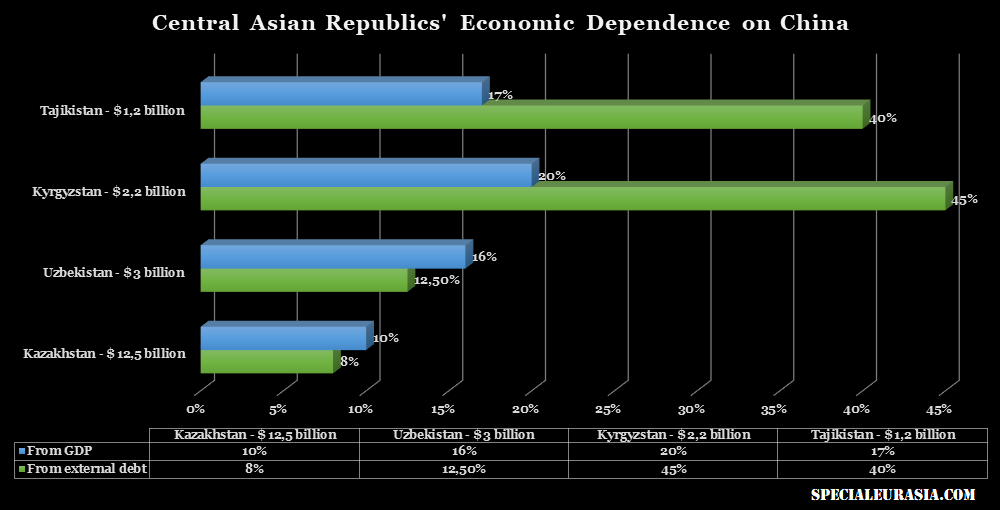Central Asian republics’ economic dependence on China

China has invested substantial financial amounts in Central Asia, creating an economic dependence and strong connection between Beijing and Central Asian republics.
This chart underlines the strong dependence that Central Asian republics have on China since Beijing started promoting the Belt and Road Initiative and investing in Central Asian infrastructural projects and economic development.
Among Central Asian republics, Tajikistan and Kyrgyzstan financially rely more on Chinese investments allowing Beijing to exploit this economic dependence to affirm its presence and influence. Indeed, since the U.S. troops’ withdrawal from Afghanistan, the Chinese authorities have promoted security cooperation with Dushanbe and Bishkek. In this framework, China has reached a security cooperation agreement with Kyrgyzstan (China and Kyrgyzstan strengthened security cooperation). At the same time, Tajikistan granted permission to build a military base in Gorno-Badakhshan Autonomous Region (GAUR) to support regional security and create an outpost to defend Chinese-Tajik borders (Chinese military base in Tajikistan: regional implications).
Chinese economic presence in Central Asia might threaten Moscow’s Eurasian Economic Union (EAEU) and the Kremlin’s desire to remain the leading geopolitical actor in this region, which is part of the Russian blizhnee zarubezhe (near abroad). Although China and Russia have often promoted their good relations and partnership in different fields and against a ‘common threat’ represented by the United States, in the future, Moscow and Beijing might collide for supremacy in Central Asia.
